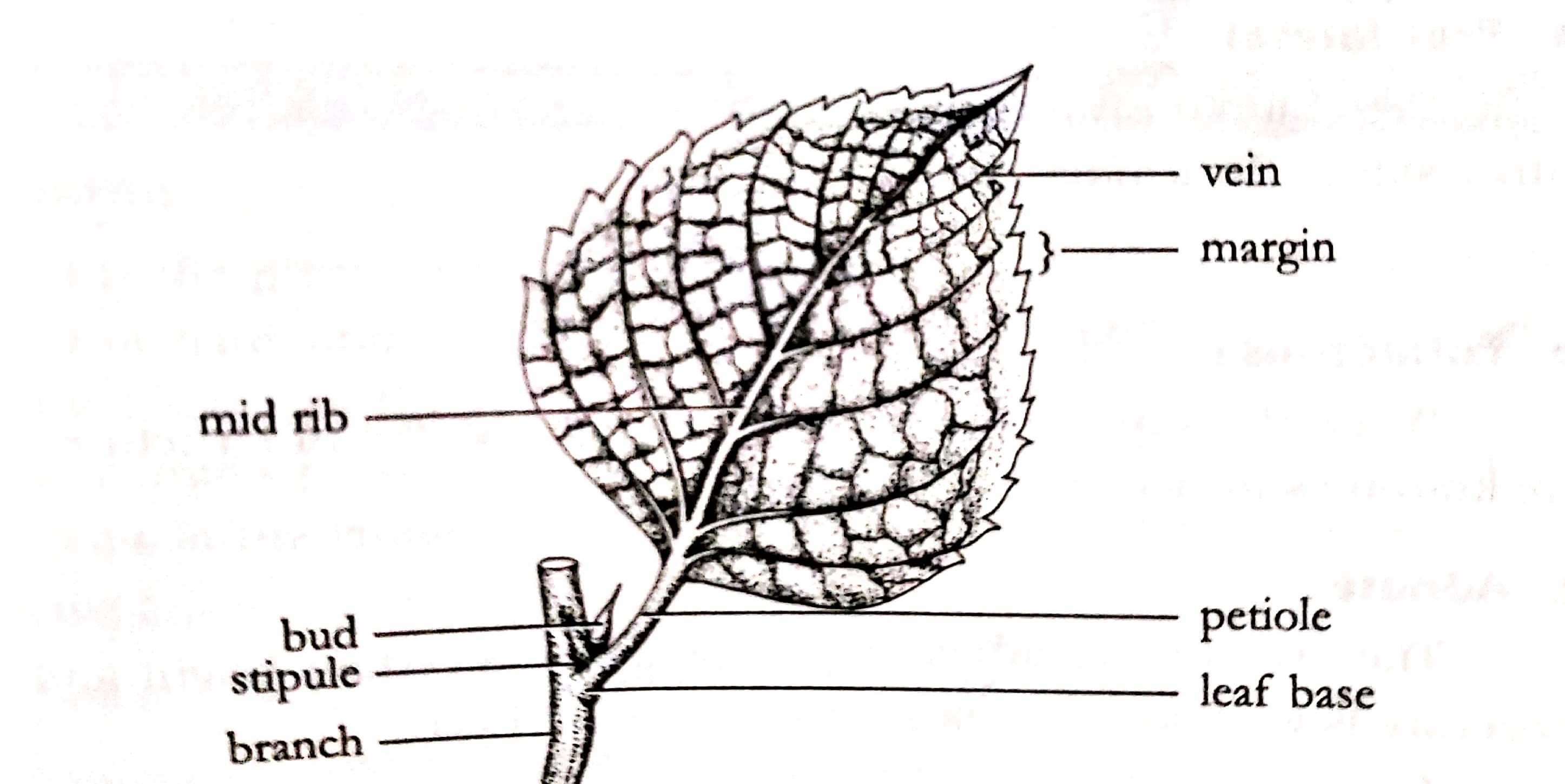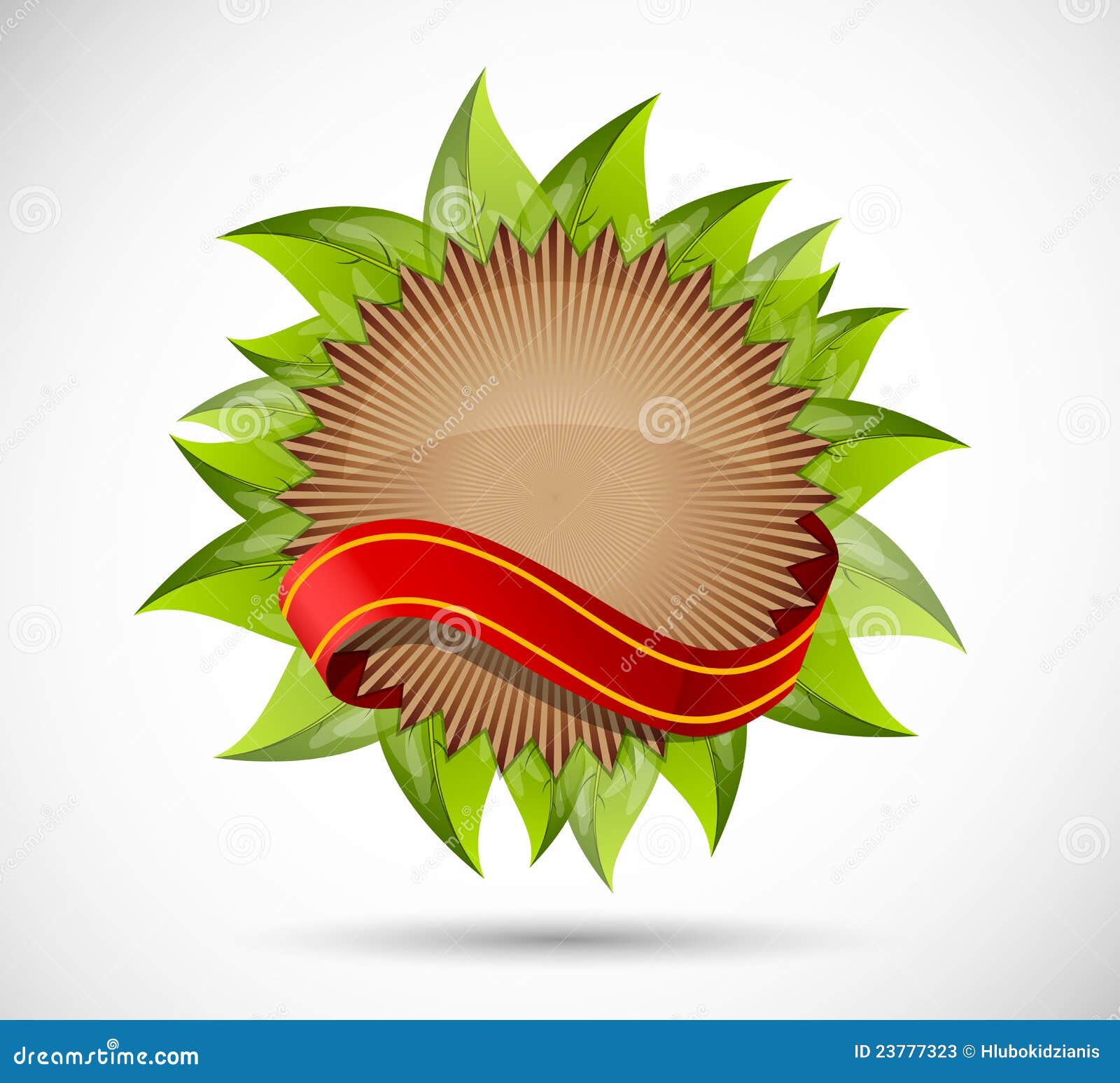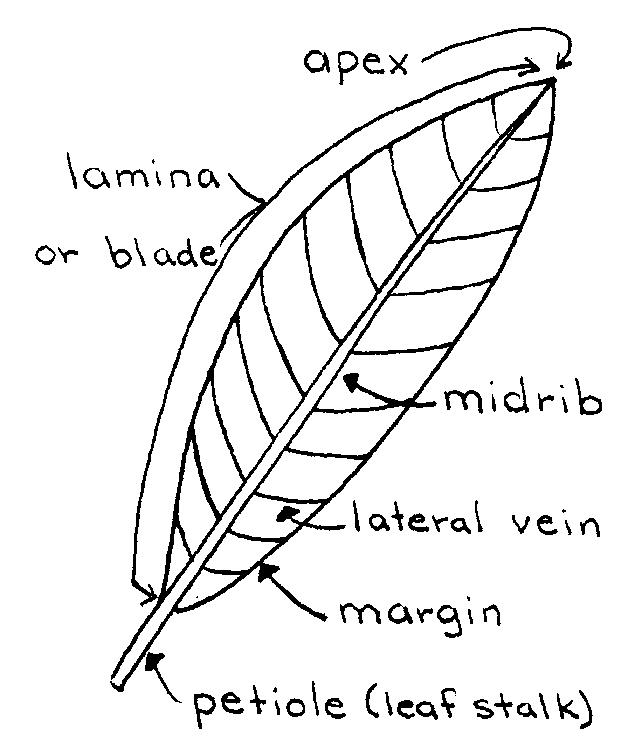
Labeled Diagram Of A Leaf
The air space found between the spongy parenchyma cells allows gaseous exchange between the leaf and the outside atmosphere through the stomata. In aquatic plants, the intercellular spaces in the spongy parenchyma help the leaf float. Both layers of the mesophyll contain many chloroplasts. Figure 30.10. 1: Mesophyll: (a) (top) The central.

Plant Leaf Label ClipArt Best
Leaves are the main sites for photosynthesis: the process by which plants synthesize food. Most leaves are usually green, due to the presence of chlorophyll in the leaf cells. However, some leaves may have different colors, caused by other plant pigments that mask the green chlorophyll. The thickness, shape, and size of leaves are adapted to.

Leaf Labelled Stock Photo Download Image Now iStock
Like the stem, the leaf contains vascular bundles composed of xylem and phloem (Figure 3.4.2.6 − 7 3.4.2. 6 − 7 ). When a typical stem vascular bundle (which has xylem internal to the phloem) enters the leaf, xylem usually faces upwards, whereas phloem faces downwards. The conducting cells of the xylem (tracheids and vessel elements.

Root, Stem and Leaf Class 6, Getting to know Plants Toddler Learning
There are two basic forms of leaves that can be described considering the way the blade (or lamina) is divided. Leaves may be simple or compound. Figure 30.9.1 30.9. 1: Simple and compound leaves: Leaves may be simple or compound. In simple leaves, the lamina is continuous. (a) The banana plant ( Musa sp.) has simple leaves.

Label with leaves stock vector. Illustration of packaging 42536575
Leaves are the site of photosynthesis in plants. Plant leaves help to sustain life on earth as they generate food for both plant and animal life. The leaf is the site of photosynthesis in plants. Photosynthesis is the process of absorbing energy from sunlight and using it to produce food in the form of sugars. Leaves make it possible for plants.

A typical plant leaf (Different parts and types) Online Science Notes
Certain organs that are superficially very different from the usual green leaf are formed in the same manner and are actually modified leaves; among these are the sharp spines of cacti, the needles of pines and other conifers, and the scales of an asparagus stalk or a lily bulb. Leaf function photosynthesis

Parts Of A Leaf Worksheet Printable Worksheets and Activities for
Free printable parts of a leaf labeled diagram and worksheet! Parts Of A Leaf Activities Leaves and Botany Different Shapes of Leaves More Leaf and Plant Activities For Kids Printable Parts of a Leaf Pack Explore Leaf Parts For Fall or Spring Leaves are fun to incorporate into science and art lessons each fall (or spring), or any time of the year.

Label with leaves stock vector. Illustration of background 23777323
Leaf Theme Page Leaf Function: Leaves are the powerhouse of plants. In most plants, leaves are the major site of food production for the plant. Structures within a leaf convert the energy in sunlight into chemical energy that the plant can use as food.

How to Draw a Leaf Parts of a leaf with labels Diagram YouTube
Leaf morphology. Leaves come in a wide variety of sizes and forms across vascular plants, from the scale leaves of some conifers to enormous, broad leaves of some flowering plants (like Coccoloba gigantifolia, shown here) to the highly divided leaves of the tree fern Cyathea (see here).The stereotypical leaf consists of a wide, flat, green blade or lamina attached to the stem by a stalk called.

Biology, Plant Structure and Function, Plant Form and Physiology
It helps in the movement of water vapors. 2. Veins. Leaf veins are divided into two parts: the main/ central vein and the side veins. It helps in transporting water and nutrients throughout the leaf. a. The main vein or the midrib: The main vein is like the backbone of the smaller vein to transport important nutrients from leaves to different.
/parts_of_a_leaf-56abaed23df78cf772b5625a.jpg)
Plant Leaves and Leaf Anatomy
Help your learners identify the various parts of a leaf with this handy activity. It includes a labelled poster, which could also be displayed on your classroom wall. Students use this to label their own blank leaf diagram. Show more.

Label Leaves Stock Illustration Download Image Now 2015, Advice
Label the leaf Quiz Key points The leaf is one of the most important organs of a plant. Leaves produce food for the plant through a process called photosynthesis. The leaves of different.

Leaf Worksheet Forest school activities, Nature school, Homeschool
Leaf Parts. Leaves are generally composed of a few main parts: the blade and the petiole. Figure 13.1.2 13.1. 2: A leaf is usually composed of a blade and a petiole. The blade is most frequently the flat, photosynthetic part. The petiole is a stem that attaches the leaf blade to the main stem of the plant.

Leaves Greetings Card Leaf Identification Chart Plant Etsy Tree
Leaf Diagram & Parts of a Leaf Labeling Activity Your student will look at a leaf and label a leaf. After your student completes the worksheet, you could have her label a real leaf, too. Leaf Pigments Worksheet Student can color the leaves and write about each pigment found in leaves. Photosynthesis Diagram and Activity Page

Autumn Sale Label With Leaves Vector Download
Directions: 1. Discuss and point to the parts of a real leaf. 2. Have child color page, cut, glue, and label their leaf. The printable comes in two levels; the first level has numbers (as pictured) so kids can match the numbers to label their leaf.

32 Leaf With Label Labels Design Ideas 2020
Treehugger / Hilary Allison All tree leaves exhibit margins—the blade-like edges of the leaves—that are either serrated or smooth. Leaf margins can be finely classified based on at least a.